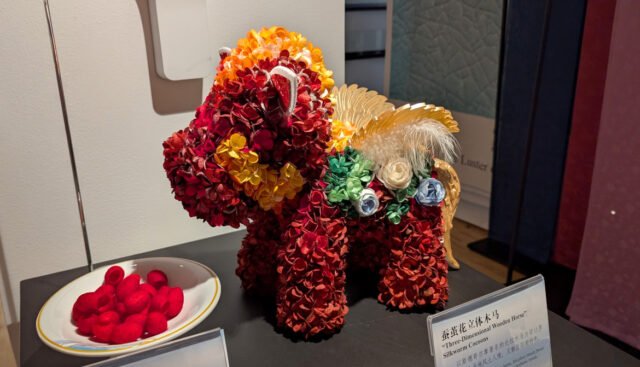Lucia is a popular tradition in Sweden, where a "Lucia train", or Lucia procession, lights up the darkness in the morning. The tradition became popular in the 20th century, but dates back even further. Although Lucia is associated with Christianity, the tradition dates back to before Sweden became a Christian nation, when people were wary of the demonic crone known as "Lussekäringen".
Today, Lucia is usually celebrated in Sweden on the morning of December 13. Lucia walks in the dark with a crown of candles, real or battery operated, with an entourage of maids (tärnor) and "star boys" (stjärngossar) holding candles. Gingerbread men (pepparkaksgubbar) and Christmas elves (tomtenissar) are sometimes included, especially in children's Lucia processions. Evocative voices dance to the pulse of the glowing lights in the winter darkness, and the songs sung are ones that most people have heard so many times that they know them by heart. Gingerbread and so-called "lussekatter", a type of saffron bun with raisins, are often served and are more or less seen as an essential part of the celebration.
It is common for kindergartens and schools to organize Lucia processions, but they are also commonly held at various companies and hotels in the morning. In most cities, there are various associations that organize Lucia processions. It is also common for people to vote on who should be Lucia, something that extends to the national level, where Sweden elects a "Lucia of the year" every year.
Popular songs include Staffan was a stable hand and Sankta Lucia, the first verse of which is translated below.
Saint Lucia, clear mirage of light,
spread in our winter night the glow of your enchantment.
Dreams with wings, wonder we see,
light your white candles, Saint Lucia.
Lucia the saint
When Sweden was Christianized in the 14th century, the Julian calendar was introduced, and December 13th is the longest night of the year – the winter solstice. At the same time, each day was given a Christian saint, and December 13 was the day of St. Lucia. Today we have the Gregorian calendar and the winter solstice is December 22.
Lucia is considered a martyr by the Christian world and is also venerated as a saint by the Roman Catholic Church. She was a young woman born in the 280s in Syracuse, Sicily. She is said to have been a strong believer and took a vow of chastity to God, but since it was forbidden to be a Christian at that time, she kept it to herself. Her mother is said to have promised her to a man, but repeatedly tried to postpone the wedding. When her mother fell ill, Lucia is said to have taken her to the tomb of St. Agata, and her mother is said to have recovered after the visit. After this visit, her mother said that Lucia no longer needed to get married. The man to whom she had been promised became so angry that he reported Lucia to the Emperor Diocletian, who was strongly opposed to Christianity.
Lucia was sentenced to death by burning at the stake, but she did not die in the flames. Instead, a soldier allegedly fatally stabbed her in the neck.
In Christian art, she is often depicted with a sword or dagger and a wound in her neck. Another common depiction is Saint Lucia with two eyes on a plate. This alludes to the legend that before she died, she destroyed her own eyes and sent them to her fiancé. According to the story, God then gave her new eyes that were even more beautiful than the previous ones. The name Lucia comes from the Latin word lux, which means light.

Lussi the demonic crone
According to Nordic folklore, December 13th was a night of horror because it was believed that supernatural forces appeared on that day. To make sure that nothing bad happened to the farm or the animals, people stayed awake all night, which is known as lussevaka - "lusse watch". However, it was important to stay indoors.
It was also on December 13 that Lussi or Lussekäringen, an evil female creature, appeared. She came riding through the air like a demon with companions called Lussiferda. In Västergötland, for example, it was Lussegubben who came riding instead. He could also be called Lusse-Per or Lucifer. Children who had committed atrocities were especially vulnerable to Lussi, who could come down the chimney and kidnap them. If one of the Christmas preparations was not ready, Lussi could also curse the farm. The legend is said to have come to the Nordic region around the 13th century.
Party and bustle
The winter solstice was also the beginning of Christmas, when most of the preparations had to be completed, such as slaughtering the Christmas pig. There was often a party on December 13, with lots of food and alcohol. Young people would go from farm to farm, knock on doors, sing, and receive brandy and food in return.
However, this behavior was not popular among Sweden's priests in the 18th century, but instead of banning the celebration, they chose to allow Saint Lucia to play a greater role in the day, according to Linköping University. Perhaps this is the reason why people today celebrate the day more quietly than in the past.








